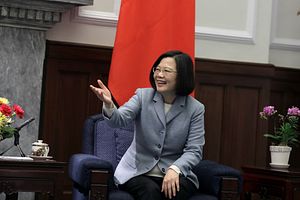Late last month, Taiwan officially announced that it would be extending the initial visa-free privileges granted to a select number of Southeast Asian states by a year. The move once again put the spotlight on the evolution of Taiwan’s New Southbound Policy under President Tsai Ing-wen, which has sought to advance ties with select regional countries, including from the ASEAN region.
Taiwan’s efforts to boost ties with Southeast Asia are not new. Previous administrations have “looked South” as well as part of broader efforts, recognizing both Taiwan’s general need to diversify ties with regional states and reduce its dependence on mainland China, as well as Southeast Asia’s own status as a strategically significant and economically dynamic region. Southeast Asian states, for their part, have also long understood the benefits that can come from closer ties with Taiwan, even though they come with their own challenges as well.
But Tsai’s New Southbound Policy (NSP) – which got underway early on when she took office in May 2016 and focuses on strengthening ties with Southeast Asia along with South Asia, Australia, and New Zealand – bears noting. In recognition of both the opportunities and challenges that Taiwan faces in the region, the NSP has initially focused on specific economic and people-to-people areas such as agricultural cooperation, medical and public health collaboration, and youth exchanges. Proper attention has also been paid to issues such as resourcing and public awareness that are key for the sustainability of new initiatives.
Though it is still early days, to some extent, the New Southbound Policy has begun to see some advances in translating from rhetoric to reality. Recent Taiwan government statistics indicate that there are increases in areas like tourism and education. In some cases, gains have surpassed earlier targets, including the number of Southeast Asians traveling to Taiwan by air and enrolling in tertiary institutions. Trade and investment figures have also seen some increases as well.
Taiwan has also indicated that more initiatives are on the way, even though movement has been slower than intended. This includes the inking of investment agreements with key Southeast Asian states, and advances in areas such as regional connectivity and a greater emphasis on Southeast Asian languages. The extension of the visa-free trial period is also a notable development in this respect, even if it has not been expanded beyond the initial three countries – Brunei, the Philippines, and Thailand – as yet.
In spite of Taiwan’s efforts to pursue the NSP, it still faces some key challenges as it moves forward. Some of the challenges are tied to what Taipei is doing or the initiative itself. These include internal issues such as resourcing and coordination in Taiwan among a full range of stakeholders, as well as external ones like managing ties with Beijing and Southeast Asian states that are cautious about getting in the crosshairs of cross-Strait relations.
Other hurdles have to do with the regional environment that the NSP is operating in. Part of this is the product of broader trends, such as the greater number of external powers stepping up their engagement with Southeast Asian states over the past few years, which has opened up room for both collaboration as well as competition among them to advance their agendas as well as to define their niche areas.
But there are also intra-regional trends as well. One of these is the erosion of democracy and human rights, which presents a tricky balance for outside actors engaging Southeast Asia, including Taiwan. The Philippines is a case in point, with the awkward juxtaposition of Manila’s relatively ardent support for NSP against human rights concerns that have emerged under the leadership of Philippine President Rodrigo Duterte.
Taiwanese officials are no doubt aware of these challenges, and efforts have been made to at least begin to address them, including domestically, such as inroads with respect to the formation of a task force, and abroad, with consultations with Southeast Asian players to understand future areas of opportunity. How Taiwan addresses these challenges and seizes new opportunities within the NSP will be interesting to watch for the rest of 2018.

































